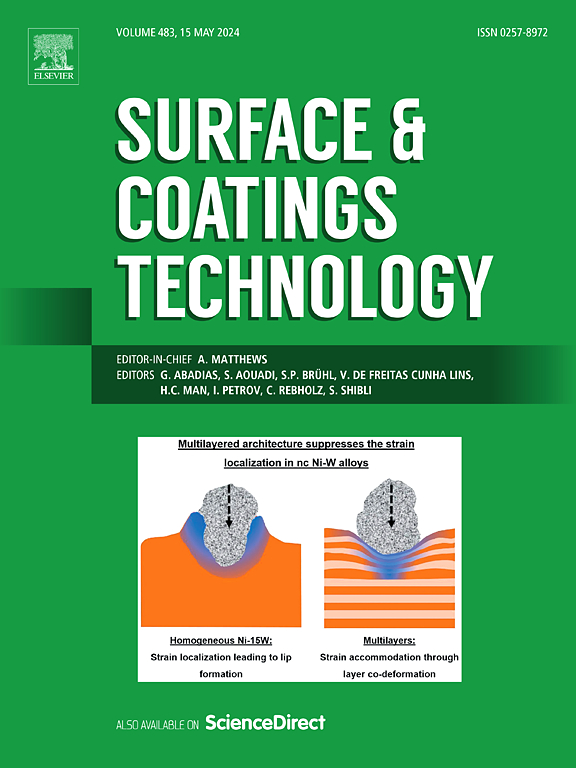Ex-situ observation of microstructure evolution and electrical resistance transition in micro joints under electron current stressing
IF 5.3
2区 材料科学
Q1 MATERIALS SCIENCE, COATINGS & FILMS
引用次数: 0
Abstract
Micro joint fabrication is a prevalent technology for microelectronic industry and the joint electrical and mechanical integrities significantly impact the electronic package reliability. In this study, the transitions in electrical resistance and crystallographic characteristics (grain orientation and size) of micro joints upon electron current stressing was characterized using an ohmmeter and an electron backscatter diffraction analysis system equipped in a field-emission scanning electron microscope. A significant decrease (approximately 7 %) in the joint electrical resistance accompanied with β-Sn grain reorientation and grain boundary elimination was induced in a few hours of the current stressing test. Mayadas-Shatzkes (M-S) model was employed to evaluate the contribution of grain boundary characteristics to the resistance drop, and revealed that approximately 85 % resistance drop was caused by the Sn grain reorientation and the remaining part (approximately 15 %) was by the grain boundary elimination. This quantitative analysis advanced the fundamental understanding of micro-joint characteristics in electrical transition induced by electromigration. Finally, a mitigation strategy of electromigration-induced β-Sn crystallographic and electrical transitions was proposed in this study.
求助全文
约1分钟内获得全文
求助全文
来源期刊

Surface & Coatings Technology
工程技术-材料科学:膜
CiteScore
10.00
自引率
11.10%
发文量
921
审稿时长
19 days
期刊介绍:
Surface and Coatings Technology is an international archival journal publishing scientific papers on significant developments in surface and interface engineering to modify and improve the surface properties of materials for protection in demanding contact conditions or aggressive environments, or for enhanced functional performance. Contributions range from original scientific articles concerned with fundamental and applied aspects of research or direct applications of metallic, inorganic, organic and composite coatings, to invited reviews of current technology in specific areas. Papers submitted to this journal are expected to be in line with the following aspects in processes, and properties/performance:
A. Processes: Physical and chemical vapour deposition techniques, thermal and plasma spraying, surface modification by directed energy techniques such as ion, electron and laser beams, thermo-chemical treatment, wet chemical and electrochemical processes such as plating, sol-gel coating, anodization, plasma electrolytic oxidation, etc., but excluding painting.
B. Properties/performance: friction performance, wear resistance (e.g., abrasion, erosion, fretting, etc), corrosion and oxidation resistance, thermal protection, diffusion resistance, hydrophilicity/hydrophobicity, and properties relevant to smart materials behaviour and enhanced multifunctional performance for environmental, energy and medical applications, but excluding device aspects.
 求助内容:
求助内容: 应助结果提醒方式:
应助结果提醒方式:


